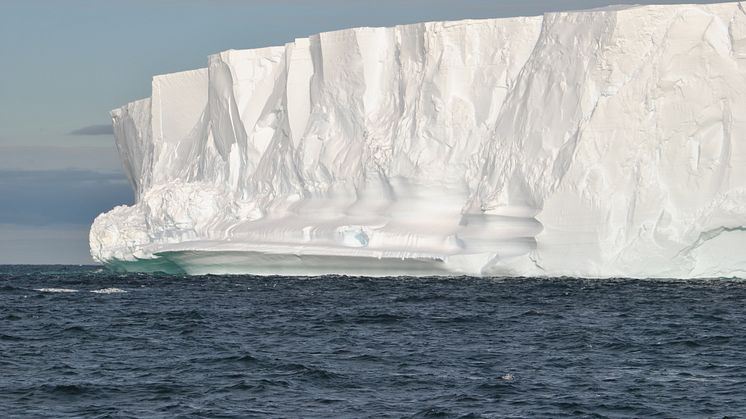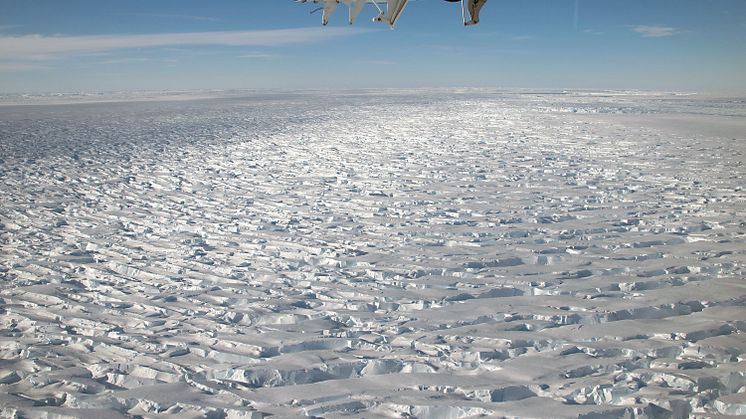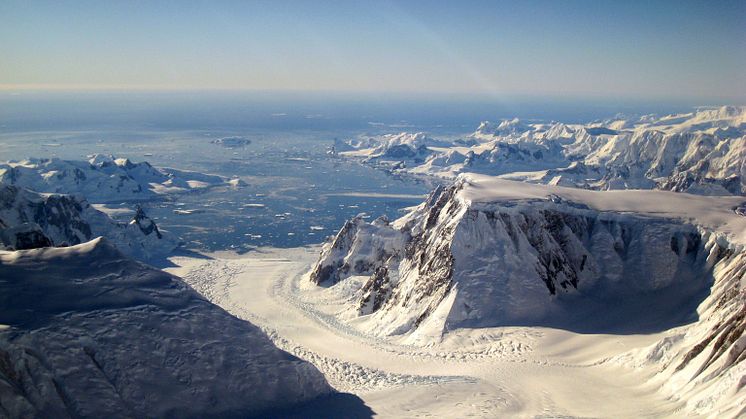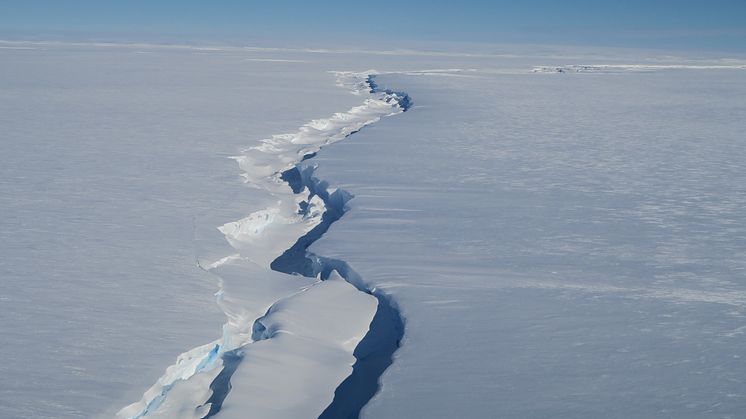
Press release -
Antarctic ice walls protect against rising sea levels
A vital role that floating Antarctic ice shelves play in preventing catastrophic sea level rises has been proven for the first time in a new study, published in the scientific journal Nature.
It has long been known that ice shelves regulate the flow of Antarctic ice into the ocean, and that thinning of the ice shelves accelerates this process.
Warm ocean currents in the deep-sea surrounding Antarctica therefore have the potential to cause global sea level rises of several metres, should they come into contact with the ice shelves, causing them to melt more rapidly.
However, it has now been shown that the walls of ice at the edge of floating ice shelves block much of these warm currents, causing them to turn around and flow back out to sea, with only a small amount passing underneath the ice shelf.
For the first time, scientists have been able to simulate these conditions in a laboratory environment which, combined with data collected in the field, has shed new light on the importance of these floating ice walls.
Among them is Professor Adrian Jenkins of Northumbria University, who has spent more than 30 years researching the interaction between oceans and ice sheets, and in turn the impact on the global climate and sea levels in future.
He is part of a Swedish-led international research group which has been exploring the movement of ocean currents around the Getz glacier in West Antarctica.
A large part of the glacier extends out into the sea, with this floating ice shelf ending in a vertical edge or ‘wall’ of ice which reaches 400 metres down into the water below.
Using a state-of-the-art fluid dynamics facility in Grenoble, France, the team were able to recreate the conditions experienced when warm ocean currents meet this wall of ice. This involved spinning a 13-metre diameter tank of water to simulate the Earth’s rotation.
As Professor Jenkins explains: “We needed to recreate the physics of what is occurring at the Getz glacier to understand how much of the warm water is able to move beneath the floating ice shelf and towards the inland ice.
“Once we had recreated the movement caused by the Earth spinning, we introduced the warm currents and then put in place a barrier, simulating the ice wall.
“We found that most of the warmer water turned when it met the ice wall. Only when we created currents that were stronger at depth, could the deep part pass beneath the barrier.
“The strongest currents found near Getz Ice Shelf are uniform from the surface to the seabed, and those currents will be blocked by the ice front.”
Alongside the simulated lab experiments, further studies were carried out at the Getz glacier, using moorings – measuring equipment dropped in the ocean at different points to monitor water flow at different depths.
Combining the results from both has provided a more accurate picture of how ocean currents move around the Antarctic coast, which in turn will help scientists to predict more accurately the speed at which glaciers will melt in the future.
As Professor Jenkins explains: “This research means we now understand more about the physics of how water circulates and moves beneath the ice shelf.
“This was something we had long suspected, and it explains why more substantial melting has not occurred up until now, as the ice walls prevent much of the warm water coming into contact with the underside of the ice shelf.
“However, it also further highlights the importance of these floating ice shelves – they are doing a vital job in regulating the outflow of ice from Antarctica, and we urgently need to know how that might change in the future.”
The models and principles discovered during the research can now be applied to other ice fronts to predict more accurately how they will change in future.
Further research will also be carried out to find out more about how the shape of an ice wall controls how much warm water is able to get past.
Professor Jenkins said: “Now that we have demonstrated the physical processes that control how the currents flow beneath the ice shelf, we can go on to explore how variations in the shape of the ice wall and the seabed beneath impact the blocking effect. That shape naturally evolves as the ice front slowly advances, then rapidly retreats as icebergs calve.”
The research paper, Ice front blocking of ocean heat transport to an Antarctic ice shelf, is published in 27 February issue of Nature.
Professor Jenkins is based within Northumbria University’s Department of Geography and Environmental Sciences and is a member of the University’s Cold and Palaeo Environment Group of researchers. He previously spent 34 years working for the British Antarctic Survey researching polar glaciology and oceanography.
The research was led by Anna Wåhlin, Professor of Oceanography at the University of Gothenburg.
Professor Jenkins’ involvement was supported by the UK Natural Environment Research Council (NERC) through the Large Grant “Ice shelves in a warming world: Filchner Ice Shelf system, Antarctica”.
The laboratory studies were supported by the Hydralab+ Project, funded by the EU Horizon 2020 Research and Innovation Programme to stimulate co-operation between European researchers by providing the opportunity to undertake novel research in unique hydraulic experimental facilities that they would not otherwise have access to.
Photos from the project, including photo credits, are available to download here - https://www.dropbox.com/s/4s7bql8yrdy3yx1/Photos_Nature.zip?dl=0
Topics
Categories
Northumbria is a research-rich, business-focused, professional university with a global reputation for academic excellence. Find out more about us at www.northumbria.ac.uk --- Please contact our Media and Communications team at media.communications@northumbria.ac.uk or call +44 (0)191 227 4604 with any media enquiries or interview requests --- Our academic experts are available for interview via Globelynx, a down-the-line broadcast quality TV facility based at Northumbria's Newcastle campus. You can book the Globelynx connection at www.globelynx.com. The IFB number is 0191 603 1630.










